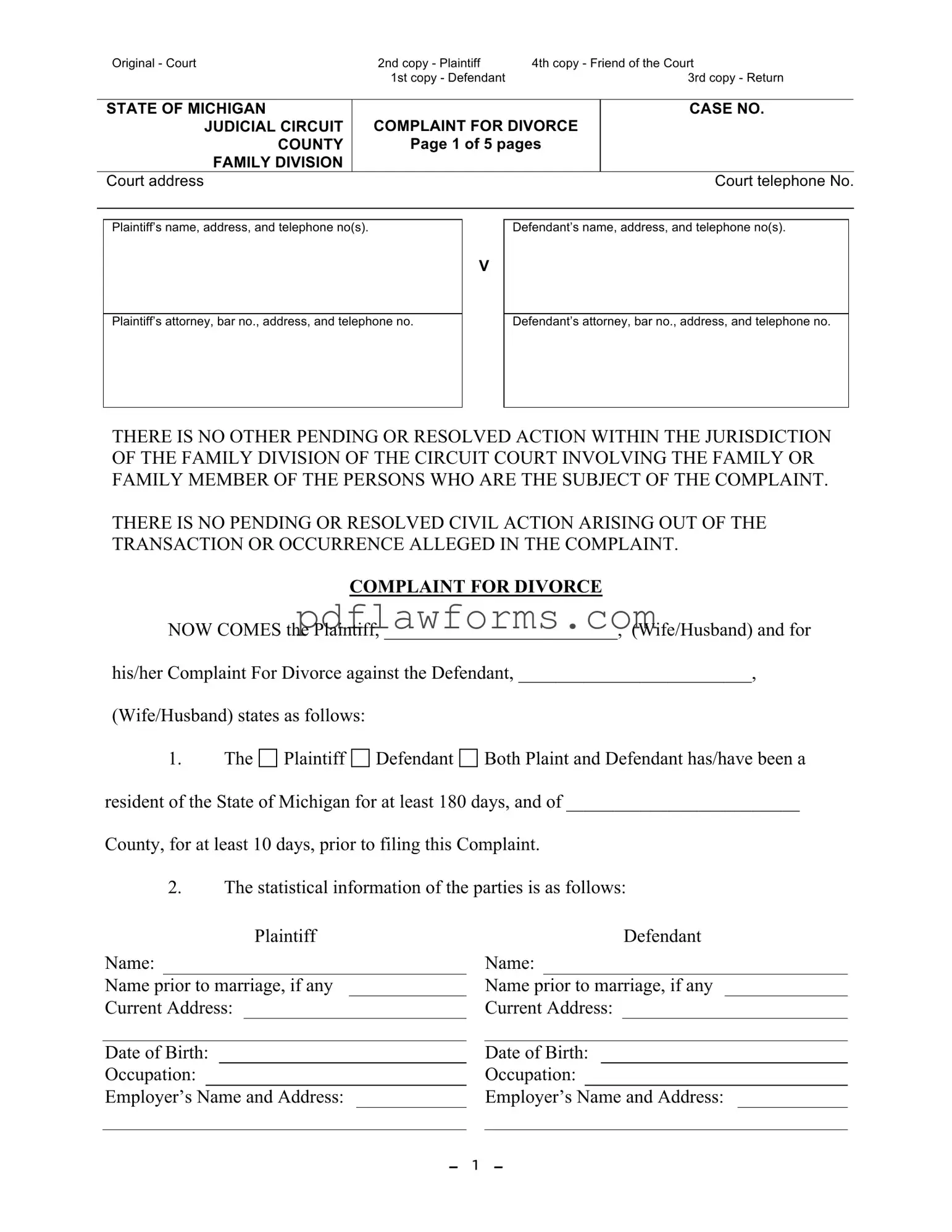Filling out the Michigan Complaint Divorce form requires careful attention to detail. One common mistake is failing to provide accurate residency information. The form requires that both parties have lived in Michigan for at least 180 days and in the specific county for at least 10 days prior to filing. If this information is incorrect or incomplete, it could lead to delays or even dismissal of the complaint.
Another frequent error is neglecting to include all necessary statistical information about both parties. This includes names, addresses, dates of birth, and employment details. Omitting any of these details can create confusion and may result in the court needing additional information, prolonging the process.
Many individuals also overlook the importance of clearly stating the date of marriage and separation. These dates are critical for establishing the timeline of the marriage and any related custody or property issues. Inaccuracies in these dates can complicate matters, particularly when it comes to dividing assets or determining custody arrangements.
Additionally, some people mistakenly indicate that there are no minor children when, in fact, there are. This can lead to significant complications later on, especially regarding custody and support issues. It is essential to accurately report the number of children involved, along with their names and dates of birth.
Another common oversight is failing to address property division properly. The form asks whether the parties have property to divide. If one party does not disclose assets or debts, this could lead to disputes later. Transparency is crucial to avoid future legal complications.
Moreover, many individuals do not fully understand the implications of the statements they are making in the form. For example, declaring that there are no pending or resolved actions related to the family can have serious consequences if that is not true. Misrepresentation can result in legal repercussions, including contempt of court.
Finally, a significant mistake occurs when individuals do not properly sign and date the form. The absence of a signature or an incorrect date can invalidate the complaint. Ensuring that all required signatures are present is a simple yet vital step that should not be overlooked.
